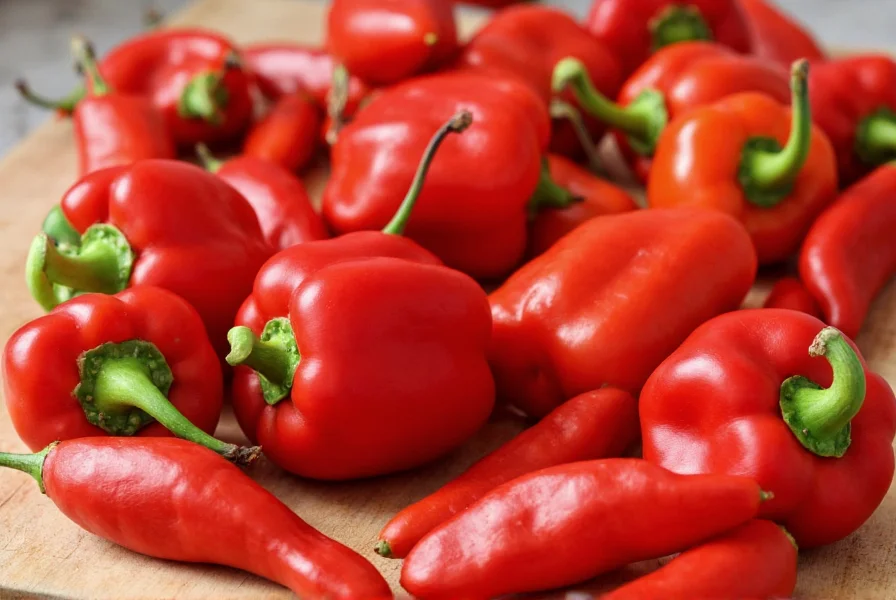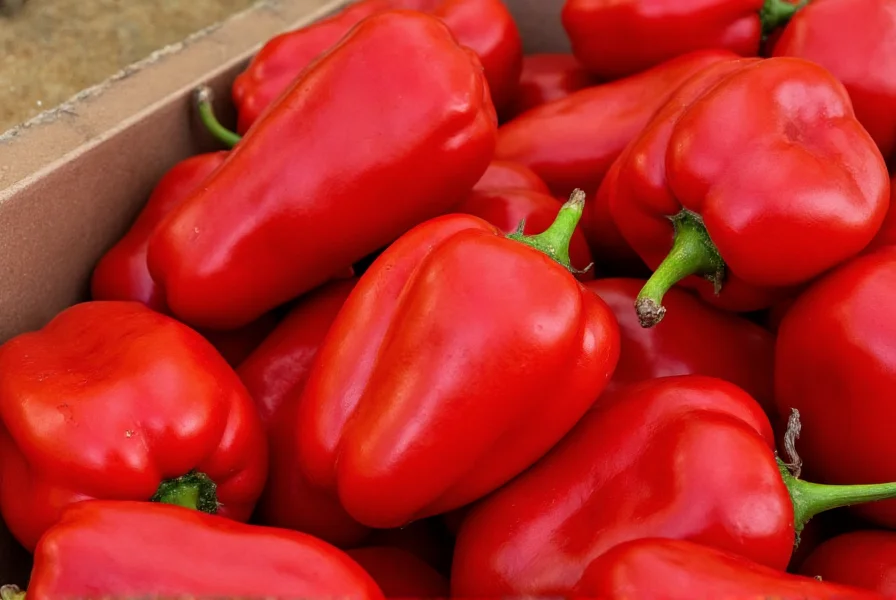When exploring the world of red pepper varieties and their applications, it's essential to understand both culinary and nutritional aspects. Red peppers represent the mature stage of what begins as green peppers, undergoing a natural ripening process that enhances their flavor profile and nutritional content. This transformation explains why red bell peppers typically cost more than their green counterparts at grocery stores.
Understanding Red Pepper Types
Red peppers fall into two main categories with distinct characteristics:
| Pepper Type | Heat Level (Scoville) | Primary Uses | Nutritional Highlights |
|---|---|---|---|
| Red Bell Peppers | 0 SHU (non-spicy) | Raw in salads, roasted, stuffed, stir-fries | Highest vitamin C content among peppers, rich in beta-carotene |
| Red Chili Peppers | Varies (Jalapeño: 2,500-8,000 SHU; Cayenne: 30,000-50,000 SHU) | Spicy dishes, sauces, dried for powder | High capsaicin content, metabolism-boosting properties |
Nutritional Profile of Red Peppers
Red peppers significantly outperform their green counterparts nutritionally. A medium red bell pepper provides approximately 169% of the daily recommended vitamin C intake and 93% of vitamin A. The extended time on the vine allows for greater development of carotenoids, particularly lycopene and beta-carotene, which give red peppers their distinctive color and antioxidant properties.
When comparing red pepper nutritional value versus green peppers, research shows red varieties contain nearly 11 times more beta-carotene and 1.5 times more vitamin C. This makes them particularly valuable for supporting immune function, skin health, and vision.

Health Benefits Supported by Research
The health benefits of red pepper consumption extend beyond basic nutrition. Capsaicin, the compound responsible for heat in chili varieties, has been studied for its potential effects on metabolism and pain management. A 2022 review in the journal Nutrients highlighted capsaicin's role in increasing energy expenditure and fat oxidation.
For those interested in red pepper benefits for weight management, studies suggest capsaicin may help reduce appetite and increase feelings of fullness. However, these effects appear modest and work best as part of a balanced diet rather than as a standalone solution.
Non-spicy red bell peppers offer different advantages, particularly for eye health. Their high lutein and zeaxanthin content may help protect against age-related macular degeneration, according to research published in the American Journal of Clinical Nutrition.
Culinary Applications and Selection Tips
Understanding how to use red peppers in cooking can transform your dishes. Red bell peppers develop a natural sweetness when roasted or sautéed, making them excellent for:
- Creating richly flavored sauces and soups
- Adding color and sweetness to salads
- Stuffing with grains, meats, or cheeses
- Grilling as a side dish
When selecting red peppers, look for firm, glossy skins without wrinkles or soft spots. Heavier peppers for their size typically contain more flesh and less air space. Store them in the refrigerator's crisper drawer for up to two weeks, though flavor peaks within the first few days after purchase.

Common Misconceptions About Red Peppers
Many people confuse red pepper flakes versus fresh red peppers. While both come from chili peppers, red pepper flakes typically contain a blend of辣椒 varieties and provide consistent heat, whereas fresh peppers offer varying heat levels depending on the specific type and growing conditions.
Another common question involves are red peppers and bell peppers the same. All red bell peppers are red peppers, but not all red peppers are bell peppers. The term "red pepper" encompasses both sweet bell varieties and spicy chili types that have ripened to red.
Practical Storage and Preparation
Maximizing the shelf life of red peppers involves proper storage techniques. Keep unwashed peppers in the refrigerator's crisper drawer with high humidity settings. For longer storage, roast and freeze peppers in airtight containers for up to six months.
When preparing red peppers, cut them lengthwise from stem to base to preserve their structural integrity for stuffing. For salads or stir-fries, the classic julienne cut (thin strips) works well. Roasting red bell peppers over an open flame or under a broiler enhances their natural sweetness and makes the skin easy to remove.
Understanding these aspects of red peppers helps home cooks and health-conscious individuals make informed choices about incorporating them into their diets. Whether seeking red pepper culinary techniques or nutritional advantages, this versatile ingredient offers numerous benefits worth exploring.











 浙公网安备
33010002000092号
浙公网安备
33010002000092号 浙B2-20120091-4
浙B2-20120091-4